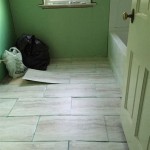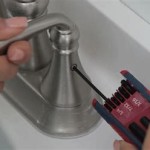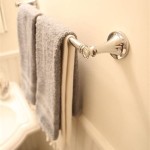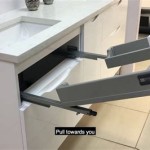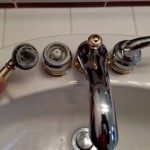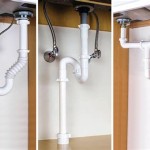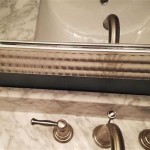How To Install Floating Shelves In Your Bathroom
Floating shelves offer a sleek and modern storage solution for bathrooms, maximizing space while maintaining a minimalist aesthetic. They provide a convenient place to store toiletries, towels, decorative items, and other bathroom essentials. This article provides a comprehensive guide to installing floating shelves in a bathroom, covering essential preparation, tools, installation techniques, and troubleshooting tips.
Planning and Preparation
Before commencing the installation, careful planning is crucial to ensure a successful and aesthetically pleasing outcome. This initial stage involves assessing the bathroom space, selecting appropriate shelves, and gathering the necessary tools and materials.
First, evaluate the available wall space. Consider the size and layout of the bathroom, factoring in existing fixtures such as the vanity, toilet, and shower. Determine the ideal location for the floating shelves, taking into account accessibility and visual appeal. The chosen location should be easily reachable and complement the overall design of the bathroom. Measure the available wall space accurately to determine the maximum length and depth of the shelves. It is important to consider the weight that the shelves will need to bear, especially considering whether the wall is drywall, plaster, or tile.
Next, select the appropriate type of floating shelves. Floating shelves are available in various materials, including wood, MDF (Medium-Density Fiberboard), glass, and metal. The choice of material should complement the bathroom's existing décor and withstand the humid environment. Solid wood shelves offer durability and a natural aesthetic, while MDF shelves provide a cost-effective alternative. Glass shelves can create a modern and airy feel, but they may require more frequent cleaning. Ensure the selected shelves come with the necessary mounting hardware, or purchase it separately.
When selecting shelves, consider both aesthetics and practicality. The depth of the shelves should be sufficient to accommodate the items to be stored. Shallower shelves are ideal for decorative items and small toiletries, while deeper shelves can accommodate larger items such as towels and folded linens. The color and finish of the shelves should coordinate with the bathroom's color scheme and overall style.
Gather all the necessary tools and materials before starting the installation process. This minimizes interruptions and ensures a smooth and efficient workflow. Essential tools and materials include:
- Floating shelves with mounting hardware
- Stud finder
- Level
- Measuring tape
- Pencil
- Drill with appropriate drill bits (for wood, masonry, or tile)
- Screwdriver (or drill with screwdriver bit)
- Safety glasses
- Dust mask
- Wall anchors (if necessary, for drywall or plaster walls)
- Construction adhesive (optional, for added stability)
Prior to drilling, it's prudent to check for any hidden pipes or electrical wiring behind the wall using a stud finder with AC wire detection. Drilling into plumbing or electrical infrastructure can result in significant damage and potential safety hazards.
Installation Process
The installation process involves accurately marking the desired locations for the shelves, securely attaching the mounting brackets, and installing the shelves onto the brackets. Precision and care are crucial during each step to ensure level shelves and a professional-looking finish.
First, locate the wall studs using a stud finder. Wall studs are vertical framing members that provide structural support. Securing the mounting brackets directly to the studs ensures maximum stability and weight-bearing capacity. Mark the location of the studs with a pencil. If it is not possible to attach to studs, high quality wall anchors designed for the anticipated weight load will be necessary.
Using a measuring tape and level, mark the desired location for the first shelf. Ensure the shelf is level and at the desired height. Use a pencil to mark the location of the mounting bracket holes on the wall. Double-check the measurements and alignment before proceeding.
Drill pilot holes at the marked locations. The size of the pilot holes should be slightly smaller than the screws provided with the mounting hardware. If drilling into tile, use a specialized tile drill bit to prevent cracking. Apply gentle pressure and maintain a steady hand while drilling.
Attach the mounting brackets to the wall using the provided screws. If attaching to wall studs, use wood screws. If attaching to drywall or plaster, use wall anchors. Ensure the brackets are securely fastened to the wall and are level. The brackets should be able to support the weight of the shelves and the items to be stored. Using construction adhesive on the mounting surface can provide additional stability, especially if the wall surface is uneven or textured.
Carefully slide the shelves onto the mounting brackets. Ensure the shelves are fully seated and are level. Use a level to check the alignment of the shelves. If necessary, adjust the brackets or shims to achieve a perfectly level surface. Some floating shelves have small set screws underneath that secure the shelf to the mounting bracket. Tighten these screws to prevent the shelf from sliding or shifting.
Repeat the process for each additional shelf, maintaining consistent spacing and alignment. Use a level to ensure all shelves are parallel and at evenly spaced intervals. Consider the overall design and functionality when determining the spacing between shelves. Taller items may require more space between shelves.
Addressing Specific Wall Types
The installation process can vary slightly depending on the type of wall in the bathroom. Drywall, plaster, and tile walls each require specific techniques and considerations to ensure a secure and lasting installation.
Drywall: Drywall is a common wall material in bathrooms. When installing floating shelves on drywall, it is crucial to use appropriate wall anchors if not attaching to studs. Several types of wall anchors are available, including plastic anchors, metal anchors, and toggle bolts. Choose anchors that are rated for the weight of the shelves and the items to be stored. Follow the manufacturer's instructions for installing the wall anchors. Some anchors require a specific drill bit size, while others can be installed directly into the drywall. Tighten the screws carefully to avoid stripping the anchors or damaging the drywall.
Plaster: Plaster walls can be more challenging to drill into than drywall. Plaster is brittle and prone to cracking. Use a masonry drill bit and drill slowly and carefully to avoid chipping the plaster. Apply gentle pressure and maintain a steady hand while drilling. Use wall anchors specifically designed for plaster. Toggle bolts provide a secure hold in plaster walls. Avoid over-tightening the screws, as this can damage the plaster.
Tile: Installing floating shelves on tiled walls requires extra care to avoid cracking the tiles. Use a specialized tile drill bit designed for drilling through ceramic or porcelain tiles. Apply masking tape over the area to be drilled to prevent chipping. Drill slowly and with light pressure. Use a water spray bottle to keep the drill bit cool and prevent overheating. Once the tile is drilled through, switch to a drill bit suitable for the material behind the tile (e.g., drywall or plaster). Use appropriate wall anchors for the underlying material. Fill the drilled holes with silicone caulk to prevent water from penetrating behind the tiles.
Regardless of the wall type, always wear safety glasses and a dust mask during the drilling process. This protects the eyes and respiratory system from dust and debris.
Troubleshooting Tips
Despite careful planning and execution, some challenges may arise during the installation process. This section provides troubleshooting tips for common issues encountered when installing floating shelves in a bathroom.
Shelves are not level: If the shelves are not level, use a level to identify the high and low points. Adjust the mounting brackets by slightly loosening the screws and repositioning the brackets. Use shims to fill any gaps between the brackets and the wall. Tighten the screws securely once the shelves are level.
Screws are stripping: If the screws are stripping in the wall, use larger screws or wall anchors. If the screws are stripping in the mounting brackets, use washers to provide a better grip. Avoid over-tightening the screws, as this can exacerbate the problem.
Shelves are wobbly: If the shelves are wobbly, ensure the mounting brackets are securely fastened to the wall. Use construction adhesive to provide additional stability. If the shelves are still wobbly, consider adding additional support brackets underneath the shelves.
Drill bit is slipping: If the drill bit is slipping on the wall surface, use a center punch to create a small indentation at the drilling location. This provides a starting point for the drill bit and prevents it from slipping. Use a drill bit with a sharp tip and apply steady pressure while drilling.
Damaged wall during drilling: If the wall is damaged during drilling, repair the damage with spackle or drywall compound. Sand the repaired area smooth and paint to match the existing wall color.
By following these guidelines, individuals can successfully install floating shelves in their bathrooms, enhancing both the functionality and aesthetic appeal of the space. Remember to prioritize safety, accuracy, and attention to detail throughout the installation process.

Diy Floating Bathroom Shelves Shades Of Blue Interiors

How To Install Floating Shelves That You Built

How To Install Floating Shelves Diy Shelf Home Stories A Z

Diy Floating Shelves And Bathroom Update Home Decor

How To Install Floating Shelves In A Tiny Bathroom Http Www Hometipsworld Com Small Half
:strip_icc()/tub2-91a20c38d3ed4d55816182ee29d5d1c3.jpg?strip=all)
15 Gorgeous Bathroom Floating Shelves Ideas

Love This Shelving Over The Tub Modern Floating Shelves Diy Bathroom

Easy 5 Dollar Floating Shelves The Kim Six Fix
15 Gorgeous Bathroom Floating Shelves Ideas

Pin On My Saves
Related Posts
